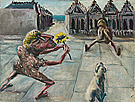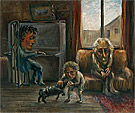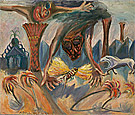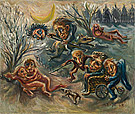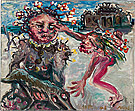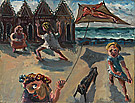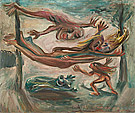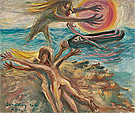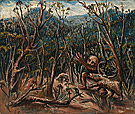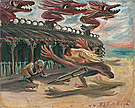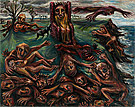Exhibition themes Early years
Introduction
Arthur Boyd: agony and ecstasy is a major exhibition selected from the extensive holdings of the National Gallery of Australia. The exhibition focuses on Boyd’s extraordinary artistic output between 1937 and 1980, providing a rare opportunity to consider one of Australia’s most important artists in depth.
An atmosphere of creativity shaped Boyd’s formative years growing up at Open Country, Murrumbeena, an outer suburb of Melbourne. Both his mother and father, Doris and Merric, were artists, as were his paternal grandparents, Arthur Merric and Emma Minnie Boyd, who all inspired him. His maternal grandmother, Evelyn Gough, a social reformer, was also important for her strong spiritual and pacifist beliefs.
From Boyd’s intense self-portrait and luminous landscapes painted at the tender age of 17, through the ensuing four decades of work, the exhibition reveals his passion for making art and his exceptional stylistic diversity across paintings, ceramics, prints, drawings and tapestries.
The emphasis in this exhibition is on Boyd’s profound engagement with the human condition. This concern came to the fore around the time of the commencement of the Second World War when his expressive works established his reputation at the forefront of Australian art. His depiction of the preciousness and precariousness of human existence became a recurring theme and grew in force from the war years through the ensuing decades.




